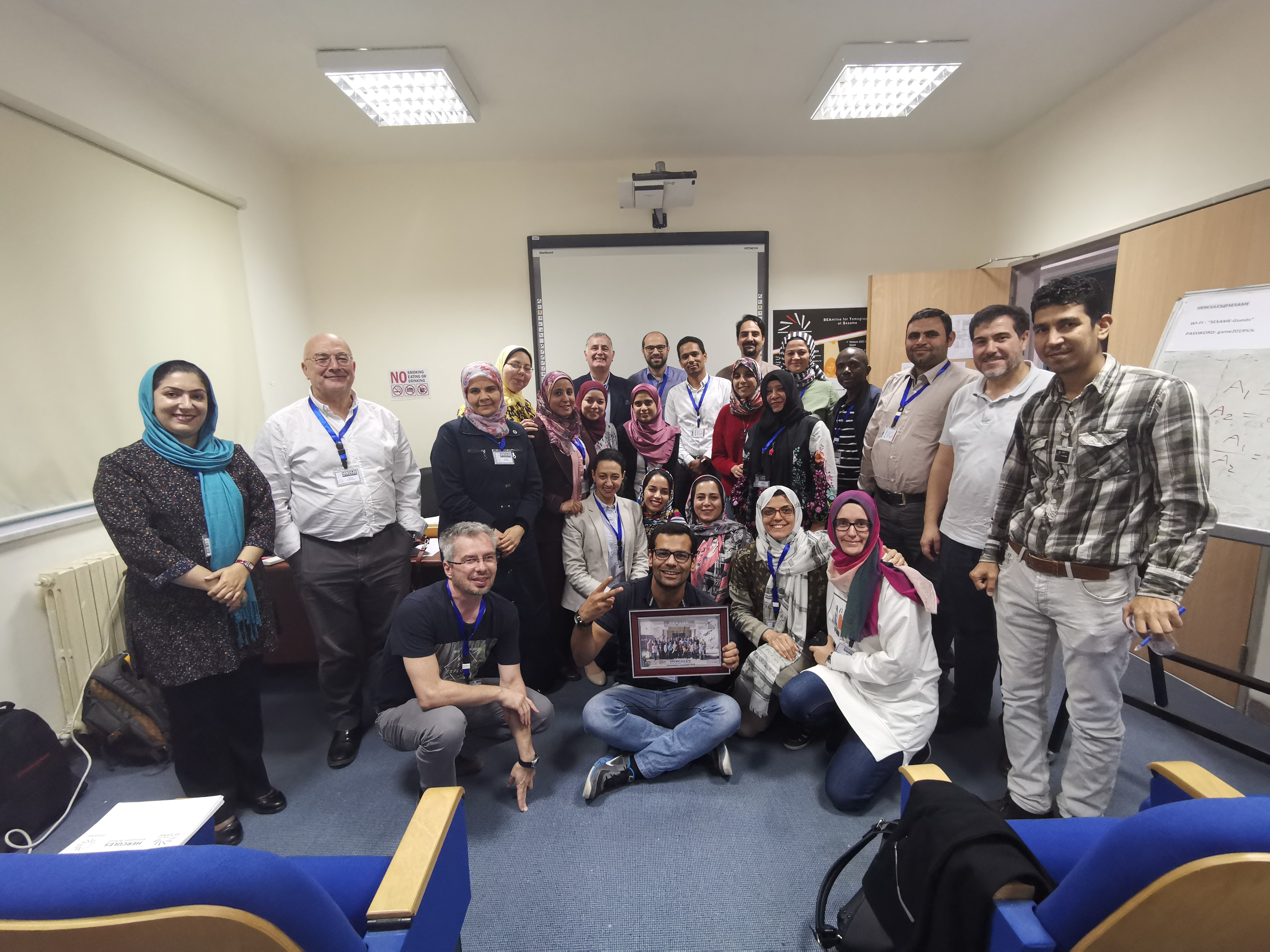SESAME was the recent venue of the OPEN SESAME HERCULES School (Higher European Research Course for Users of Large Experimental Systems) held from October 26 to November 8, 2019, which provided comprehensive training to exploit synchrotron radiation for 20 researchers from the SESAME Members and beyond.
Organised by SESAME in cooperation with the European Synchrotron Radiation Facility (ESRF) and the Université Grenoble Alpes, this training school was funded by the European Union within the OPEN SESAME project (Horizon 2020 project under grant agreement n.730943).
The objective of the two-week school was to give a comprehensive overview on the broad basics, techniques of synchrotron radiation and applications in the fields of Material Science, Cultural Heritage, Physics, Chemistry, Biology and Biomedicine, Structural Biology and Environment.
The programme, following the principles of the HERCULES school, included theoretical and tutorial classes run by international experts, as well as practical sessions in small groups on the SESAME beamlines.
The following experimental techniques were covered:
- X-ray absorption spectroscopy
- Infrared spectroscopy
- Soft X-ray spectroscopy
- Powder and single crystal diffraction
- Macromolecular crystallography
- Small-angle X-ray scattering
- X-ray imaging & tomography
The lecturers included top scientists working at SESAME and at European synchrotron radiation facilities and international research institutes, namely:
Ahmed Mansour (HZB) - Germany
Andy Fitch (ESRF) – France
Christophe Sandt (SOLEIL) – France
David Djurado (INAC-CEA) - France
Davide Altamura (CNR) – Italy
Dritan Siliqi (CNR) – Italy
Francesco d’Acapito (ESRF) -France
Gihan Kamel (SESAME) – Jordan
Giorgio Paolucci (SESAME) - Jordan
Henri Payno (ESRF) – France
Kirsi Lorentz (CYI) – Cyprus
Mahmoud Abdellatief (SESAME) - Jordan
Majid Kazemian (Diamond Light Source) – UK
Margie Olbinado (PSI) – Switzerland
Messaoud Harfouche (SESAME) - Jordan
Miguel Garcia Aranda (CELLS) – Spain
Vincent Favre-Nicolin (HERCULES school Director - ESRF) - France
Yuguang Zhao (INSTRUCT) – United Kingdom
The school provided an excellent occasion for transferring knowledge to the user communities emerging around SESAME to fully exploit the brightest X-rays of the Middle East. It was also a good opportunity for the young scientists to mingle together and exchange ideas. All participants actively participated in the school, not only during the lectures but also by gathering after the classes and during the extra-curricular social events.
During the final evaluation session, the school received a very positive feedback. All students agreed that the school gave them the opportunity to improve their knowledge about synchrotron techniques, that the learning and teaching methods encouraged participation and that the overall environment of the school was conducive to learning. All of them also expressed the wish for more training schools like this and commented that the event represented a good occasion to meet and network with researches coming from different cultures and backgrounds and with the scientists forming part of the staff of SESAME. Indeed, the school provided an excellent platform to discuss new ideas and future research collaborations. They all stated their firm intention to participate in SESAME’s future calls for proposals for beam time in order to return to SESAME to profit from the high-performance synchrotron techniques for their research plans.
Feedback from some of the participants:
“It was a good thing having participants from different research fields and different nationalities because I was inspired to think out of the box and try different techniques for my experiments”
“This was a well-organised training that would need to be organised on a yearly basis to help our young scientific community to grow!”
“Thank you for the essential financial support and for bringing together the best speakers from different synchrotron facilities worldwide!”
“Participants were from different research areas. Therefore, we will have the opportunity to collaborate with each other in the future for multidisciplinary research plans”



